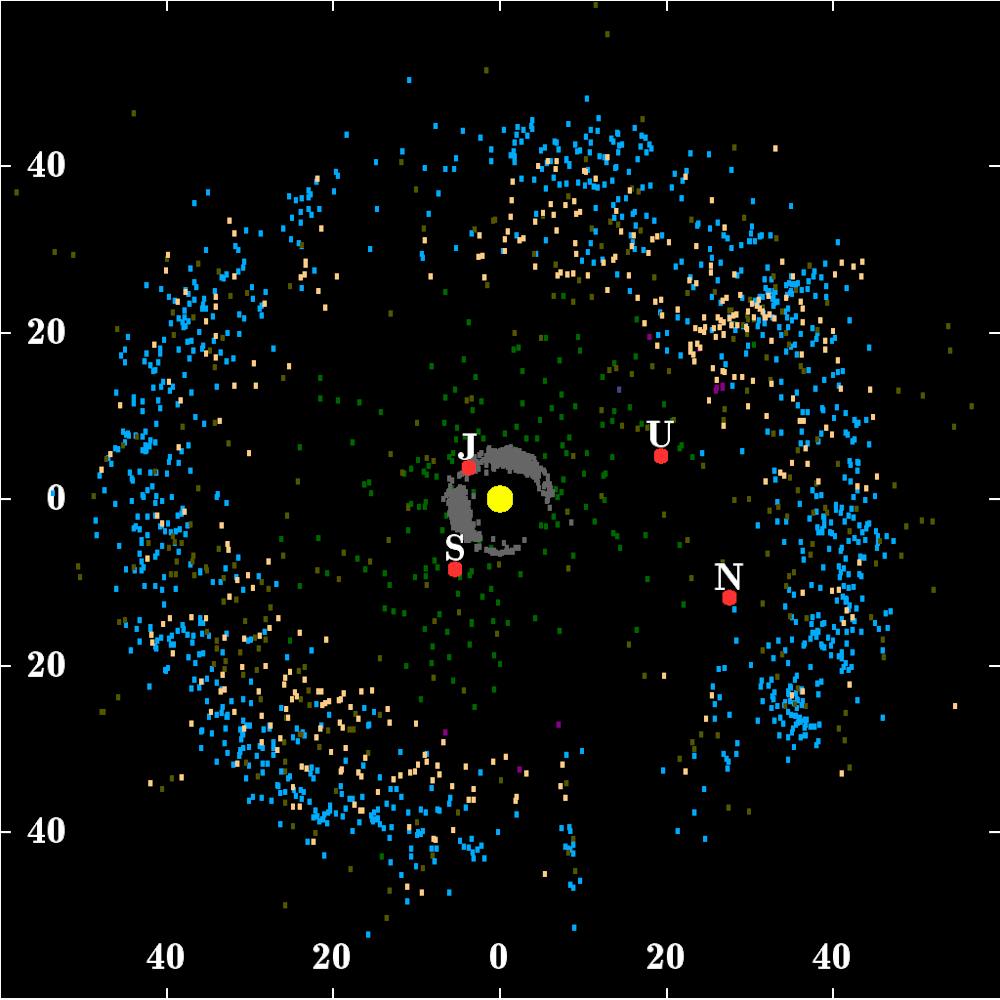Since the solar system formed over 4.5 billion years ago, planets and other objects have been subject to constant change due to heating from the Sun.
But a new model developed by researchers from Brown and the SETI Institute in California estimates that objects in the Kuiper Belt, the region beyond Neptune that includes Pluto, still possess their “primitive” ices. The researchers’ findings were published in the scientific journal Icarus.
Ever since NASA’s New Horizons team discovered Kuiper Belt Object 486958, now called Arrokoth, papers within the astrophysics community have held that its ancient volatiles — substances that vaporize readily — would all have sublimated and outgassed by now. But such models did not account for the structure of these objects, according to Sam Birch, assistant professor of Earth, environmental and planetary sciences.
Kuiper Belt Objects, the paper found, are actually in “kind of a cryo state from the very initial formation of the planets,” Birch said.
“Imagine you have (...) a sponge that has ice in all the pores, and it's really cold, but as it sublimates a bit, that ice in the pores of the sponge will slowly retreat towards the interior,” Birch explained. “So what people have said before is all that ice is gone and you're just left with the base sponge.”
“Our idea is that these Kuiper Belt objects are not devoid of all their primitive ancient ices, but they have a lot of it still in the core, and then in the structure above that, they should have a lot of gas that's just slowly oozing out,” he added. “So, we kind of think of them as bloated porous sponges.”
Birch and co-author Orkan Umurhan, who works at the NASA Ames Research Center alongside being a SETI senior research scientist, accounted for how the gas moves through the porous structure of Arrokoth. After sublimating, instead of leaving the body, the gas lingers inside the spongey “matrix,” Umurhan said, which causes the surface where the ice would evaporate to be in “vapor pressure equilibrium.”
“You probably have experienced this in your day to day,” Umurhan said. “You take some wet clothes and hang them out to dry on a really humid day versus a very dry day, and of course, on a dry day, your wet t-shirt is going to dry pretty fast, but if it's a super humid day, it takes much longer for it to dry.”
Because the porous matrix of Arrokoth slows the volatiles’ evaporation at the extremely low temperatures in the Kuiper Belt, those trapped gasses in the outer layers of the object create “feedback” that prevent internal volatiles from then sublimating, Birch explained.
“In order to keep sublimating, the key thing that we inputted into the model was that you need to first get the gas that you sublimate out, and in order to get gas out, it has to flow through the sponge structure,” Birch said. As the gas keeps getting colder and slower, “eventually it just kind of stops partway down, and you're slowly leaking out gas, but you still preserve most of the stuff on the inside.”
UCLA astrophysicist David Jewitt, who led the team that discovered the Kuiper Belt in 1992, noted that this new paper is only one way to understand KBOs.
“You have many free parameters for building a model, because we don't have many constraints about the detailed physical structure of comparable material,” Jewitt said. He added that this new model is “probably a good one,” but that “other people have models of the same thing, and they reached the opposite conclusion.”
The Kuiper Belt is almost 3 billion miles away from Earth; it is practically impossible to reach and sample KBOs, according to Birch. This is why scientists instead turn to comets, which are KBOs once they get knocked into the terrestrial planet region, and much more easily accessible, Jewitt explained.
The question then becomes, according to Birch, “How representative of the Kuiper Belt is a comet today?”

Elise Haulund is a science & research editor and sophomore from Redondo Beach, CA. Concentrating in English and biology, she has a passion for exploring the intersection between STEM and the humanities. Outside of writing, researching and editing, she enjoys ballet-dancing, cafe-hopping and bullet-journaling.





